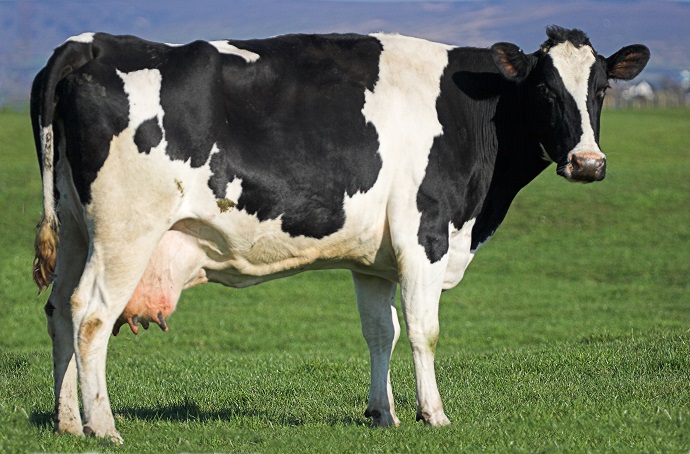Is it just us, or does it seem like there are new options every time you go to the store? Take milk, for example. There’s organic, soy, rice, and grass-fed milk—the last of which can cost two-and-a-half times more than regular milk! Is it worth the price? We’ve done the research for you so you can make an informed decision for your household.
Label Meaning There isn’t a government-regulated claim for the term “grass-fed.” However, the American Grassfed Association (AGA) certification is the gold standard in grass-fed dairy products. A third-party certification you can look for on your meat labels, it’s specific and carefully regulated, which means it’s an accurate reflection of farming practices. You can check out the detailed checklist for certification here, but one of the main points is that at least 60% of an animal’s diet during a grazing season of at least 150 days a year must consist of pasture. The American Grassfed® label tells you that cows have eaten forage consistently for the duration of their lives, were raised on pasture, never received hormones, and were treated with certain approved antibiotics only when sick or injured.
Health Grass-Fed Dairy: Higher ALA Content Grass-fed dairy products generally contain more ALAs alpha-linoleic acids (ALAs, a type of omega-3) than conventional dairy products. This doesn’t make a big health difference because dairy has very few omega-3s in the first place—a 3.5-ounce serving of salmon has 83 times as many omega-3s as an 8-ounce glass of milk.
Grass-Fed Milk: Higher Ratio of Omega-3 to Omega-6 Fatty Acids A 2013 study demonstrated that organic whole milk from grass-fed cows contained a higher ratio of omega-3 to omega-6 fatty acids than the milk from conventional grain-fed cows. This ratio is associated with reduced risk of heart disease. Keep in mind that the ratio of omega-3s to omega-6s difference may be less beneficial in reduced-fat and skim milk from grass-fed cows.
Grass-Fed Milk: Higher Iron and Vitamin E Content Grass-fed milk also provides more oxygen-carrying iron and antioxidant vitamin E.
Grass-Fed Butter: Higher Vitamin K and Butyrate Content When compared to conventional butter, grass-fed butter has more vitamin K2, which reduces heart attack risk by keeping arteries flexible and clear of blockages, and the fatty acid butyrate, which reduces inflammation.
Flavor and Texture Studies demonstrate that grass-fed dairy differs from conventional dairy in flavor; however, the taste of any dairy product, conventional or grass-fed, varies by brand, and by personal preference. One thing we do know is that grass-fed dairy has terroir, just like wine—meaning its taste is influenced by which plants the cows grazed on, and on the climate and soil where the plants were grown.
Because of its fat composition, grass-fed butter is generally softer at room temperature, making it more “spreadable.”
Animal Welfare Generally speaking, grass-fed animals have more room to roam, because conventional dairy production keeps many cows together in small spaces. Due to this close confinement, conventional dairy cows are routinely treated with antibiotics to preempt illness. Grass-fed cows, like organic cows, are less disease-prone because they’re not as close together.
The AGA certification has a specific focus on animal welfare. The AGA specifically dictates that:
- “All livestock production methods and management must promote animal health, safety and welfare;”
- “Living conditions for all livestock must accommodate the health and natural behaviors of the animals;”
- “Shade, shelter, fresh air and clean drinking water must be made available on a daily basis for dairy animals;”
- “Pastures, paddocks and shelter must be large enough to allow all dairy animals to graze without crowding or competition for food;”
- And “Sick or injured animals must be treated.”
That’s not to say that non-certified farms don’t do these things; only that to be sure as a consumer, you can look for the AGA American Grassfed seal.
Farmer Welfare Producing grass-fed dairy can lead to increased profit margins for farmers for two reasons. First, consumers are willing to pay more money for grass-fed products, so farmers can charge more. Second, allowing animals to graze on pasture cuts down on feed costs. Farmers don’t need to feed their cows as much supplemental grain to meet their dietary needs because they’ve got ample, nutritious grass. They don’t need to buy as many seeds because well-managed pastures reseed themselves perennially. And they don’t need to buy as much fertilizer for feed crops, because the cows leave their manure in the fields.
Environmental Impact While all farming has some environmental impact, grass-fed farms are required to factor environmental impact into the choices they make. The AGA specifies that all certified farms “will have in place a written pasture management and grazing plan that supports biological diversity, natural resources and soil fertility.” In addition, it dictates that “Existing wildlife and wildlife habitat will be managed to allow native wildlife on the farm to coexist with domestic animals.”
Conclusion Health-wise, both grass-fed and conventional dairy are both good choices as part of a well-balanced diet. Although grass-fed dairy is higher in omega-3s and certain vitamins, there’s not yet enough data to know if that translates to an improvement in human health.
If environmental and ethical food production issues are important to you, grass-fed dairy may be a good option, but remember that certification is expensive, and that there are non-certified farms that let their cows graze freely on well-managed pastures, treat them well, and abide by environmentally friendly practices. As always, your best bet is knowing your values, your taste preferences—and most of all, your farmer.







